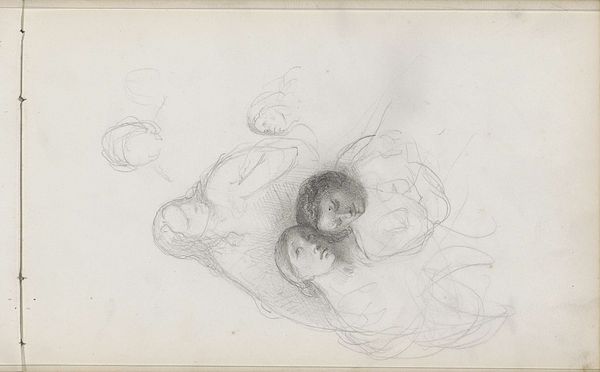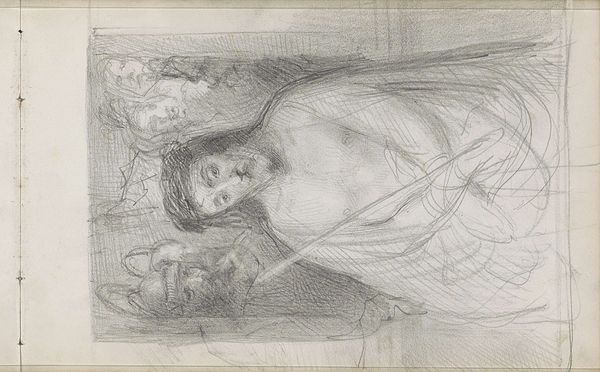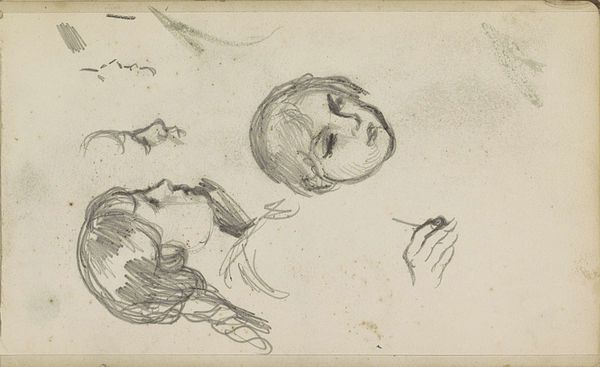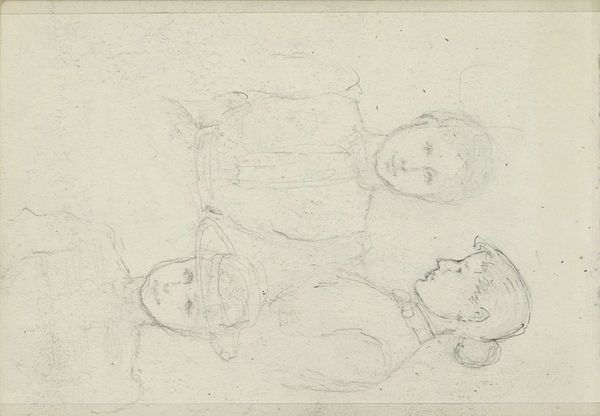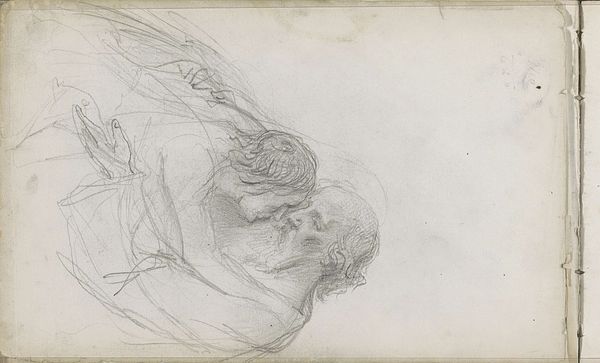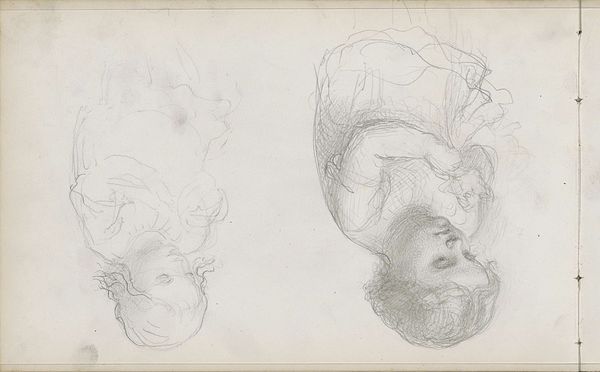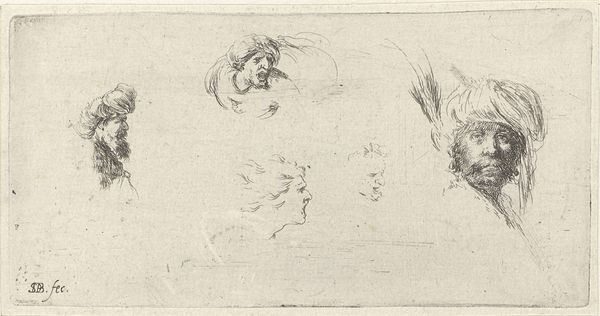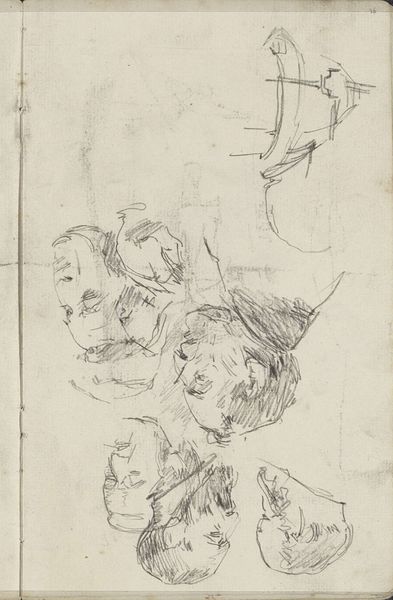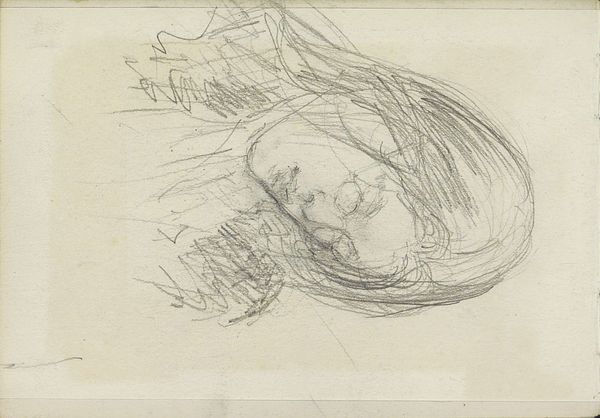
#
pencil drawn
#
amateur sketch
#
light pencil work
#
pencil sketch
#
incomplete sketchy
#
charcoal drawing
#
possibly oil pastel
#
pencil drawing
#
underpainting
#
watercolor
Copyright: Rijks Museum: Open Domain
Curator: This is "Groep van tien mannen en vrouwen," or "Group of Ten Men and Women," a pencil drawing created around 1858 by Bastiaan de Poorter. It's currently held at the Rijksmuseum. Editor: Oh, this is... intriguing. Almost unsettling. There’s something about the density of the figures, all crammed together and mostly sleeping, that gives me the creeps. Are they sleeping, or… Curator: It does evoke a rather somber feeling, doesn’t it? You notice the sketch-like quality. The artist seems to be exploring form and composition more than striving for a polished finish. He really makes the pencil work, layering the graphite to create depth in those faces. Editor: Right. It makes me wonder about the material limitations and the context of its creation. Was paper expensive? Was it a preliminary sketch for something grander? The work is not quite complete—there's labor in process, especially visible in the outlines. You get a sense for the economic value in a sketch. It also shows how materials themselves can dictate the aesthetic choices, right? Curator: Absolutely, the availability and cost of materials definitely play a role. Maybe this sketch was intended as practice for a larger composition. He may be testing various faces and figuring out placement. But as a complete artwork itself, the unfinished appearance provides intimacy for the viewer: a voyeuristic scene perhaps of observing the human figure in its most vulnerable, private, moments. Editor: Yeah, vulnerable is the perfect word. The unfinished quality lends this intimate insight. Look at the visible process, where lines and shadows reveal the maker's movement: the economic aspect really strikes home because, ultimately, everything ties back to resources—both natural resources and labor itself. How accessible was artistic training or the basic supplies for a lower class versus upper class citizen? It raises questions of class, doesn't it? Curator: Absolutely. These are really pertinent observations. Perhaps the intention was more in the process than the completed article? Now that I consider that further, that's definitely quite liberating... not weighed down by having to get it *perfect*. Editor: Indeed. De Poorter gives us the impression of both accessibility and privilege in his art. It’s something that you carry away from your experience of seeing this drawing, regardless of the material and the method that he used to create it. Curator: And I walk away just feeling more empathetic for those resting souls and maybe wanting to reach for my own pencils.
Comments
No comments
Be the first to comment and join the conversation on the ultimate creative platform.
